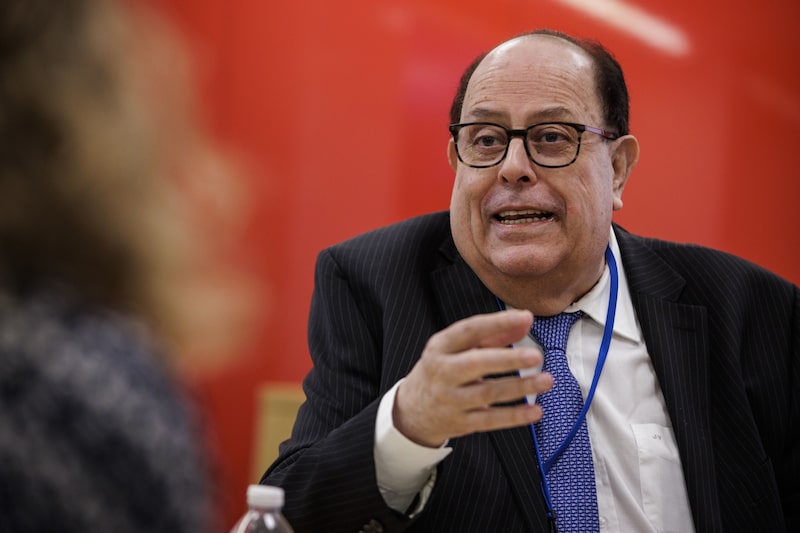Bloomberg — Peru’s central bank president Julio Velarde said he’s wary of the risk of easing monetary policy prematurely before inflationary pressures have been curbed.
“The worst case scenario for a central banker is to lower the interest rate only to hike it again two or three months later,” Velarde said Friday, in a rare interview. “We have to be sure that inflation has been defeated.”
Latin America’s major economies will probably need a prolonged period of high-interest rates to tame stubborn inflation, the International Monetary Fund said in a report this week. In February, Velarde’s central bank unexpectedly halted its steepest-ever series of monetary tightening, citing the weak growth outlook. But it declined to rule out additional interest rate rises if the inflation outlook worsens.
Velarde sees Peru’s inflation rate slowing to 3% by the end of the year, from 8.4% in March. If that scenario plays out, the bank’s next move could be a cut, he said, speaking on the sidelines of the IMF’s spring meetings in Washington, D.C.
“If that projection holds, we wouldn’t see a need to hike the interest rate,” he said. “Instead, it would be a scenario to cut rates at some point.”
Velarde has been in office since 2006, making him among the world’s longest-serving central bankers. Peru has enjoyed a long period of relative economic stability, even as the country has been roiled by extreme political turbulence in recent years.
Traders aren’t betting on any more Peru rate increases, but they don’t expect the nation to lead monetary easing in Latin America this year, Velarde said. Investors expect Chile or Brazil to cut rates first, he said.
Peru’s inflation rate is on a downward trajectory, but its drop is unlikely to be smooth, and there may be months when it doesn’t slow, Velarde said.
Mass Unrest
The mass unrest which hit Peru’s economy in December, January and February appears to have run its course, Velarde said. The bank cited the damage caused by the anti-government protests in its decision to stop raising interest rates.
Earlier this year, thousands of protesters demanding the resignation of President Dina Boluarte blocked highways for weeks, and more than 60 civilians died, mainly in clashes with security forces. The economy contracted in January, as the disruption hit mining, agribusiness and tourism.
More recent flooding should not become a significant issue for the economy, Velarde added.
Boluarte, who came to power in December after her predecessor was impeached, may now enjoy some stability, Velarde said. She managed to resist the pressure to quit without committing to early elections.
“In this case, the most predictable scenario would be for the elections to take place when they were supposed to, which is in 2026,” Velarde said. “Obviously there was a moment when early elections looked likely, but protests have wained, that effect has worn off a bit.”
Velarde didn’t rule out the possibility of staying for another five-year term when his current period ends in 2026.
Read more on Bloomberg.com


